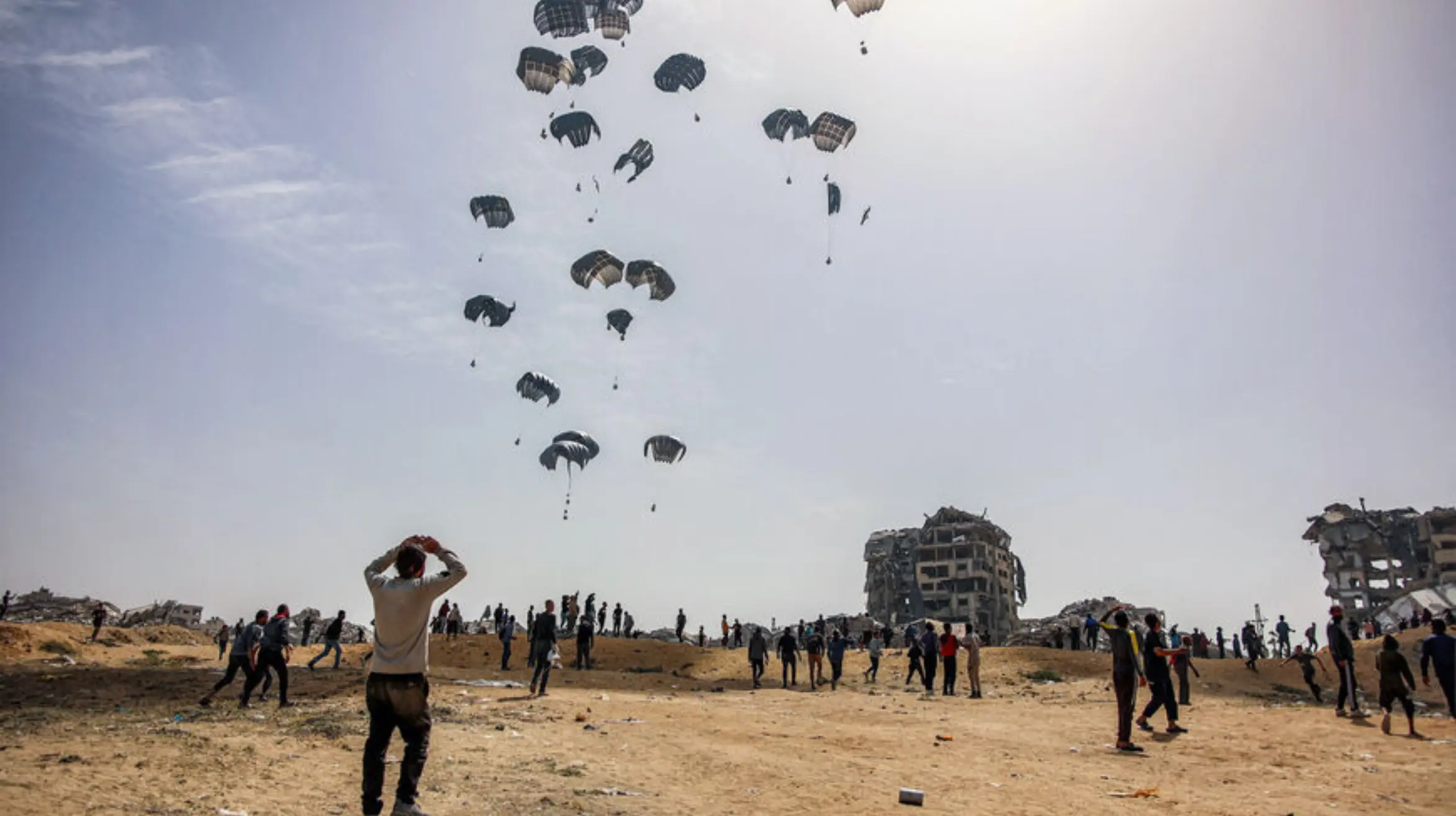Gaza (Transatlantic Today)— Vehicles carrying vital supplies for the Gaza Strip drove across a recently built American pier, navigating Israeli blockades and the ongoing fighting to get supplies to the area. This first cargo initiates an operation that US military officials anticipate might grow to 150 truckloads every day throughout Israel’s seven-month battle against Hamas. The U.S. and relief organisations warn that although the floating pier project is underway, it cannot completely replace land deliveries, which previously made it easier to transport a substantial amount of fuel, food, and water into Gaza—more than 500 truckloads were delivered there every day before the conflict.
First Shipment Arrives Despite Challenges
Trucks carrying critical goods rolled across the newly constructed US pier and into Gaza for the first time on Friday, signaling the start of what is expected to be a massive aid operation. Despite continued Israeli military activity near Rafah and logistical constraints like as fuel shortages caused by the closure, the inaugural shipment represents a significant step forward in addressing Gaza’s humanitarian catastrophe.
Warning Against Substitute Measures
While the commencement of aid delivery via the floating pier is a significant development, both U.S. officials and aid organizations caution that it cannot fully substitute land-based deliveries. Prior to the conflict, hundreds of truckloads of essential supplies entered Gaza daily, underscoring the importance of maintaining multiple avenues for aid distribution.
Multinational Effort for Humanitarian Relief
According to AP, The United States Central Command, in charge of directing the operation, highlights the global nature of the effort, highlighting the participation of numerous countries and humanitarian groups in assistance delivery. This united initiative demonstrates the international community’s commitment to assisting the civilian population of Gaza in their hour of need.
Infrastructure and Logistics
The successful implementation of the assistance distribution operation is made possible by the erection of a floating platform several kilometres offshore, which serves as a hub for transferring aid from larger vessels to smaller boats. The Joint Logistics Over-the-Shore (JLOTS) project simplifies the shipment of commodities to Gaza, providing efficient distribution despite logistical constraints.
UN Coordination and Response
While welcoming the initiation of aid delivery through the maritime corridor, the United Nations emphasizes the importance of maintaining land-based routes for humanitarian assistance. With fuel deliveries via land routes dwindling, ensuring access to critical supplies remains a pressing concern for humanitarian agencies operating in the region.
In conclusion, the start of assistance distribution through the newly constructed dock is a huge step forward in addressing the humanitarian crisis in Gaza. However, long-term international cooperation and support are critical to overcoming the hurdles created by continued war and logistical barriers, ensuring that vital help reaches those in need in a timely and effective manner.


























